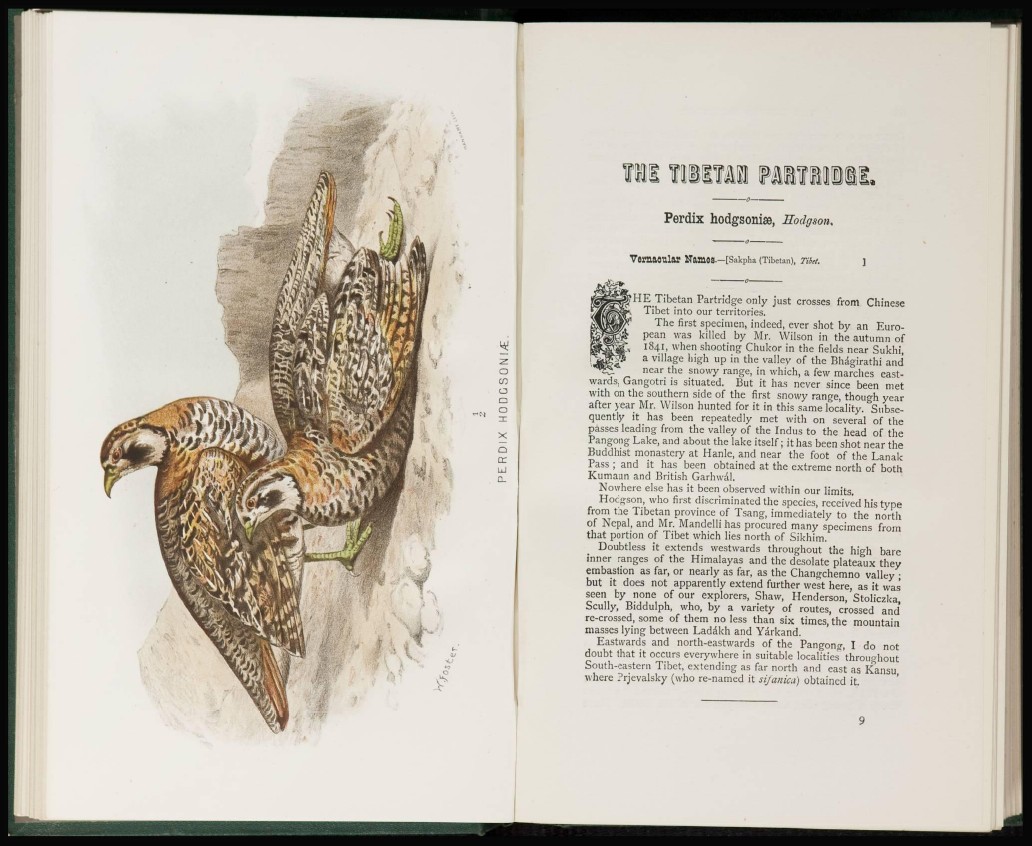
Perdix hodgsonise, Hodgson,
Vemaeular Names.—[Sakpha (Tibetan), Tibet. ]
HE Tibetan Partridge only just crosses from Chinese
Tibet into our territories.
The first specimen, indeed, ever shot by an European
was killed by Mr. Wilson in the autumn of
1841, when shooting Chukor in the fields near Sukhi,
a village high up in the valley of the Bhagirathi and
near the snowy range, in which, a few marches eastwards,
Gangotri is situated. But it has never since been met
with on the southern side of the first snowy range, though year
after year Mr. Wilson hunted for it in this same locality. Subsequently
it has been repeatedly met with on several of the
passes leading from the valley of the Indus to the head of the
Pangong Lake, and about the lake itself; it has been shot near the
Buddhist monastery at Hanle, and near the foot of the Lanak
Pass ; and it has been obtained at the extreme north of both
Kumaun and British Garhwal.
Nowhere else has it been observed within our limits.
Hodgson, who first discriminated the species, received his type
from the Tibetan province of Tsang, immediately to the north
of Nepal, and Mr. Mandelli has procured many specimens from
that portion of Tibet which lies north of Sikhim.
Doubtless it extends westwards throughout the high bare
inner ranges of the Himalayas and the desolate plateaux they
embastion as far, or nearly as far, as the Changchemno valley ;
but it does not apparently extend further west here, as it was
seen by none of our explorers, Shaw, Henderson, Stoliczka,
Scully, Biddulph, who, by a variety of routes, crossed and
re-crossed, some of them no less than six times, the mountain
masses lying between Ladakh and Yarkand.
Eastwards and north-eastwards of the Pangong, I do not
doubt that it occurs everywhere in suitable localities throughout
South-eastern Tibet, extending as far north and east as Kansu,
where Prjevalsky (who re-named it sijanicu) obtained it.